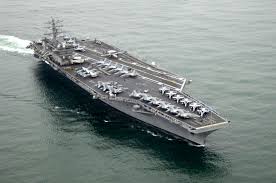
Introduction
The USS Nimitz (CVN-68) aircraft carrier represents one of the most formidable symbols of naval power in modern warfare. As the lead ship of the Nimitz-class, it plays a critical role in the U.S. Navy’s operations, showcasing advanced technology and military prowess. With global tensions rising and naval presence becoming more crucial, the importance of such vessels cannot be overstated.
Historical Context and Features
Commissioned in 1975, the USS Nimitz has since undergone numerous upgrades, significantly enhancing its capabilities. It measures 1,092 feet in length, making it one of the largest warships in the world. Equipped with a nuclear propulsion system, it can operate for over a decade without refueling. The carrier carries a complement of approximately 90 aircraft, including F/A-18 Hornets, E-2 Hawkeyes, and more, allowing for a versatile range of tactical operations.
Recent Deployments and Activities
In recent months, the USS Nimitz has been involved in critical operations aimed at ensuring maritime security. It recently completed a six-month deployment in the Indo-Pacific region as part of the U.S. Navy’s ongoing efforts to deter aggressive actions in that area, particularly from nations like China and North Korea. Throughout this period, it conducted exercises with allied nations, promoting joint readiness and response capabilities.
Strategic Importance
The presence of the USS Nimitz in strategic hotspots demonstrates the U.S.’s commitment to its allies and the maintenance of a rules-based international order. Military analysts note that the capability to project power and respond rapidly to threats makes the Nimitz-class carriers indispensable to the U.S. Navy’s operational strategy. This ongoing relevance in today’s geopolitical climate highlights the need for continuous investment in naval capabilities.
Conclusion
As global maritime dynamics evolve, the significance of the USS Nimitz aircraft carrier remains undiminished. It continues to embody the technological advancements and strategic deterrence capabilities essential for modern naval warfare. As the U.S. Navy moves forward, the integration of new technologies and the potential future replacements will be vital in maintaining naval superiority across the world’s oceans.



